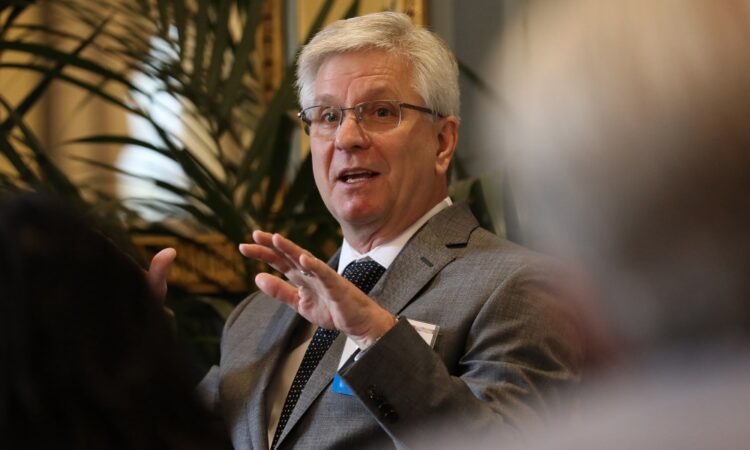
That has the Fed keeping a close eye on the risks of de-dollarization and how it could impact American consumers and businesses.
“There has been for some time been commentary predicting that the dollar is destined for demise–potentially an imminent demise,” Fed Governor Christopher Waller said Monday in opening remarks at a conference on the international role of the U.S. dollar.
For well over half a century, the dollar has been the world’s de facto “reserve currency,” the default currency held in central bank reserves and the dominant currency in foreign exchange markets: The U.S. dollar appears in over 90% of forex transactions. The dollar’s global dominance is an “exorbitant privilege” for the U.S., in the words of Valery Giscard d’Estaing, president of France in the 1960s.
But if the recent uptick in commentary arguing that the dollar’s era of dominance could be ending soon proves correct, it would send shock waves throughout the global economy and increase borrowing costs within the U.S. Meanwhile, digital currencies are posing new threats to the dollar’s privileged status, though the jury’s still out as to whether the dollar is truly destined for decline.
While Waller acknowledged shifts in global finance, he reaffirmed the dollar’s role in it.
“The role of the U.S. in the world economy is changing, and finance is always changing,” he said. “The dollar remains by far the most widely used currency by a number of metrics.”
In foreign exchange markets, the dollar’s value is strong right now—the greenback has more buying power than it’s had for almost 20 years. But that strength has strained foreign governments by increasing interest payments on dollar-denominated debt, and left them counting on the Fed for relief by cutting rates, prompting some countries to consider other options.
And after the U.S. imposed sanctions on Russia for its invasion of Ukraine, other governments have realized that upsetting the American government could mean their dollar holdings can be frozen.
Some have pivoted to gold as a safe, long-term store of value: Central banks’ demand for gold is at record highs, led by China and Turkey. China has also pushed the renminbi for international payments and as a reserve currency, while others have proposed digital currencies (including China, which started piloting a digital version of its currency, the e-CNY, back in 2017) as legit alternatives to central banks’ dollar holdings.
On Monday, Waller noted that geopolitical tensions, sanctions against Russia, China’s efforts to boost the renminbi, and economic fragmentation can affect the dollar’s international usage.
“If these sanctions and policies are long-lasting, the shifting cross-border payments landscape, including the rapid growth of digital currencies, could also pose challenges to the dominant role of the U.S. dollar,” he added.
For his part, Waller has dismissed concerns over the dollar’s status in the past. In February, he gave a talk where he pointed out that demand for dollars increased during periods of global unrest as well as the ubiquity of the dollar in foreign exchange and international lending markets.
“I do not expect to see the U.S. dollar lose its status as the world’s reserve currency anytime soon, nor even see a significant decline in its primacy in trade and finance,” Waller said at the time. “Recent developments that some have warned could threaten that status have, if anything, strengthened it, at least so far.”
